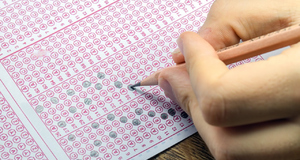Featured Article:Today's Non-Traditional Student: Challenges to Academic Success and Degree Completion
By
2016, Vol. 8 No. 03 | pg. 2/2 | « ConclusionAcademic success among nontraditional students appears to be correlated with several biological, psychological, and social factors. Nontraditional students are more likely to leave school due to conflicting responsibilities (work, parenting, caring for an elderly parent), or because of a lack of support from their home educational institution (Eppler, Carsen-Plentl, & Harju, 2000). Nontraditional students are less likely to complete their degree programs, and have lower attrition rates compared to traditional students (Taniguchi & Kaufman, 2005). While nontraditional students constitute a significant portion of postsecondary schools’ consumers, institutions have not sufficiently accommodated the needs of this population. Many higher education institutions implement policies such as open admissions and part-time enrollment to attract nontraditional students, yet a discrepancy in degree attainment between traditional and nontraditional students remains (Taniguchi & Kaufman, 2005). In order to address the discrepancy, postsecondary institutions must acknowledge the factors that influence the success of their growing populations. Additionally, institutionalized practices should be adjusted to address factors that negatively impact nontraditional students. Implications for Higher Education InstitutionsThe findings from this literature review have many implications for higher education institutions. Role conflict among nontraditional students encourages selection of part-time academic schedules. Part-time enrollment presents significant challenges for students, including lack of financial aid, less opportunities to connect with staff and fellow students, and longer degree completion time. Thus, it would behoove postsecondary institutions to present options that either facilitates full time enrollment or addresses the challenges created by part-time enrollment.Flexible Course OptionsProviding students with flexible course options may increase retention rates, full time enrollment, and shorter degree completion durations. Online, weekend, evening, accelerated, and hybrid (split between in-person and online classes) courses allow students to fit their academic career into their already packed schedules (Taylor, Dunn & Winn, 2015). The traditional course schedule model of predominantly morning and afternoon courses that meet two to three times per week over the course of sixteen weeks does not complement the lifestyles of most nontraditional students. Support ServicesNontraditional students note a lack of support from their peers, faculty members, and family friends, as a barrier to academic success (Jeffreys, 2007). Institutions may opt to provide counseling, academic, and career services with evening hours and online services. Improved Financial AidNontraditional students report finances as a significant barrier to their academic success (Jeffreys, 2007). Financial aids programs such as work-study allow low income students to gain work skills while earning income for educational expenses. Scholarships and grants exclusive to nontraditional students increases funds made available to that segment of the student population, thus more opportunities arise for degree completion and enrollment. Academic Credit for Work and Life ExperienceMany nontraditional students maintain part-time or full-time employment while enrolled in college. The vast majority of accredited colleges and universities adhere to the Council for Adults and Experiential Learning (2015), which states academic credit should only be rewarded for work and life experience if the student demonstrates they have acquired practical and theoretical knowledge from said experience. This requirement may present a barrier for most students seeking academic credit for work experience; however, giving the students the option may be beneficial to those who choose to take advantage of it. Implications for FacultyDespite the need for more flexibility in modes of course instruction and academic support, faculty members may be hesitant to move away from the traditional model of course scheduling and delivery (Hurst, 2015). Institutions may consider providing professional development programs to improve use of technologic resources for course instruction (Elliott, Rhoades, Jackson & Mandernach, 2015). A possible option for higher education institutions seeking additional faculty members to assist with meeting the needs of nontraditional students are the hiring of adjunct faculty members skilled in online teaching (Adams & Dority, 2005). Skilled adjunct faculty may assist with teaching online and hybrid courses, academic advising, and office hours that extend beyond the traditional hours. ReferencesAdams, M. & Dority, K. (2005). Part-Time Faculty: Building a Quality Team. DETC Occasional Paper Number 24. Distance Education And Training Council, 1-48. Allegrini, A. (2015). Gender, STEM Studies and Educational Choices. Insights from feminist perspectives. In E. K. Henrickson, J. Dillon, & J. Ryder (Eds.), Understanding student participation & choice in science & technology education (pp. 43-59). New York, Springer Science and Business Media B. V. doi:10.1007/978-94-007-7793-4_4 Bean, J.P., & Metzner, B.S. (1985). A conceptual model of nontraditional undergraduate student attrition. Review of Educational Research, 55, 485-540. doi: 10.2307/1170245 Beasley, M., & Fischer, M. (2012). Why they leave: the impact of stereotype threat on the attrition of women and minorities from science, math and engineering majors. Social Psychology Of Education, 15(4), 427-448. doi:10.1007/s11218-012-9185-3 Bye, D., Pushkar, D., & Conway, M. (2007). Motivation, interest, and positive affect in traditional and nontraditional undergraduate students. Adult Education Quarterly, 57, 141-158. Carney-Crompton, S., & Tan, J. (2002). Support systems, psychological functioning, and academic performance of nontraditional female students. Adult Education Quarterly, 52, 140-154. Chee, K. H., Pino, N. W., & Smith, W. L. (2005). Gender differences in the academic ethic and academic achievement. College Student Journal, 39, 606-615. Chung, E., Turnbull, D., & Chur-Hansen, A. (2014). Who Are "Non-Traditional Students"? A systematic review of published definitions in research on mental health of tertiary students. Educational Research and Reviews, 9, 1224-1238. Council for Adults and Experiential Learning (2015). College credit. Retrieved from http://www.cael.org/what-we-do/college-credit . Donhardt, G. (2013). The fourth-year experience: Impediments to degree completion. Innovative Higher Education, 38(3), 207-221. Donaldson, J.F., & Graham, S. (1999). A model of college outcomes for adults. Adult Education Quarterly, 50, 24-40. Elliott, M., Rhoades, N., Jackson, C. M., & Mandernach, B. J. (2015). Professional Development: Designing Initiatives to Meet the Needs of Online Faculty. Journal Of Educators Online, 12, 1-29. Gary, J. M., Kling, B., & Dodd, B. N. (2004). A program for counseling and campus support services for African American and Latino adult learners. Journal of College Counseling, 7, 18-23. Gayles, J. F. (2014). The impact of college experiences on degree completion in stem fields at four-year institutions: Does gender matter? Journal of Higher Education, 85, 439-468. Goncalves, S. A., & Trunk, D. (2014). Obstacles to success for the nontraditional student in higher education. Psi Chi Journal of Psychological Research, 19, 164-172. Hout, M. (2012). Social and economic returns to college education in the United States. Annual Review of Sociology, 38, 379-400. Hurst, B. (2015). Making the Move to Online Teaching: One Reluctant Professor's Informal Self-Study. Techtrends: Linking Research & Practice To Improve Learning, 59(6), 35-40. Kuh, G. D., Hu, S., & Vespers, N. (2000). They shall be known by what they do: An activities-based typology of college students. Journal of College Student Development 41, 228-244. Jeffreys, M. (1995). Joining family, faculty, and friends: New ideas for enhancing nontraditional student success. Nurse Educator, 20, 11-12. Jeffreys, M. (2007). Nontraditional students’ perceptions of variables influencing retention. A multi-site study. .Nurse Educator, 32, 161-167. Jones, D. & Watson, B. (1990). High risk students in higher education, ASHE-ERIC Higher Education Report 3 (Washington D.C.: Clearinghouse on Higher Education, The George Washington University), 6. Lovell, E. D. (2014). College students who are parents need equitable services for retention. Journal of College Student Retention: Research, Theory and Practice, 16(2), 187-202.doi:10.2190/CS.16.2.b Levine, A. (1993). Student expectations of college. Change. p. 4. Markle, G. (2015). Factors Influencing Persistence Among Nontraditional University Students. Adult Education Quarterly, 65(3), 267-285. doi:10.1177/0741713615583085. McDaniel, C., & Graham, S. W. (2001). Student retention in an historically black institution. College Student Journal, 35(1), 143. National Center for Education Statistics (n.d.). Fast Facts, time to degree. Retrieved from http://nces.ed.gov/fastfacts/display.asp?id=569 National Center for Educational Statistics. (2011). Projections of education statistics to 2019. Retrieved from http://nces.ed.gov/pubs2011/2011017.pdf National Science Board. (2012). Science and engineering indicators 2012 (NSB 12–01). Arlington, VA: Author. Quimby, J. L., & O'Brien, K. M. (2006). Predictors of well-being among nontraditional female students with children. Journal of Counseling & Development, 84(4), 451-460. Remedios, R., & Richardson, J. E. (2013). Achievement goals in adult learners: Evidence from distance education. British Journal Of Educational Psychology, 83(4), 664-685. doi:10.1111/bjep.12001 Samuels, W., Beach, A. L., & Palmer, L. B. (2011). Persistence of adult undergraduates on a traditionally-oriented university campus: Does donaldson and graham's model of college outcomes for adult students still apply. Journal of College Student Retention: Research, Theory and Practice, 13(3), 351-371. doi:10.2190/CS.13.3.e Sax, L. J. & Arms, E. (2008) Gender differences over the span of college: Challenges to achieving equity, NASPA Journal about Women in Higher Education, 1(1), 25-50. Taniguchi, H., & Kaufman, G. (2005). Degree completion among nontraditional college students. Social Science Quarterly, 86(4), 912-927. doi:10.1111/j.0038-4941.2005.00363.x Taylor, J. M., Dunn, M., & Winn, S. K. (2015). Innovative orientation leads to improved success in online courses. Online Learning, 19, 1-9. Tett, L. (2000). 'I'm working class and proud of it': Gendered experiences of non-traditional participants in higher education. Gender and Education 12(2), 183-194. Tinto, V. (1993). Leaving college: Rethinking the causes and cures of student attrition (2nd ed.). Chicago: University of Chicago. U.S. Department of Education (2015). National Center for Education Statistics,Digest of Education Statistics, 2013(NCES 2015-011), Chapter 3. Retrieved from http://nces.ed.gov/fastfacts/display.asp?id=98 U.S. Department of Education (2002). National Center for Education Statistics, Nontraditional Undergraduates, NCES 2002–012. Washington, DC. Retrieved from http://nces.ed.gov/pubs2002/2002012.pdf Wolf-Wendel, L., Ward, K. A., & Kinzie, J. L. (2009). A tangled web of terms: The overlap and unique contribution of involvement, engagement, and integration to understanding college student success. Journal Of College Student Development, 4, 407. Suggested Reading from Inquiries Journal
Inquiries Journal provides undergraduate and graduate students around the world a platform for the wide dissemination of academic work over a range of core disciplines. Representing the work of students from hundreds of institutions around the globe, Inquiries Journal's large database of academic articles is completely free. Learn more | Blog | Submit Latest in Education |


















